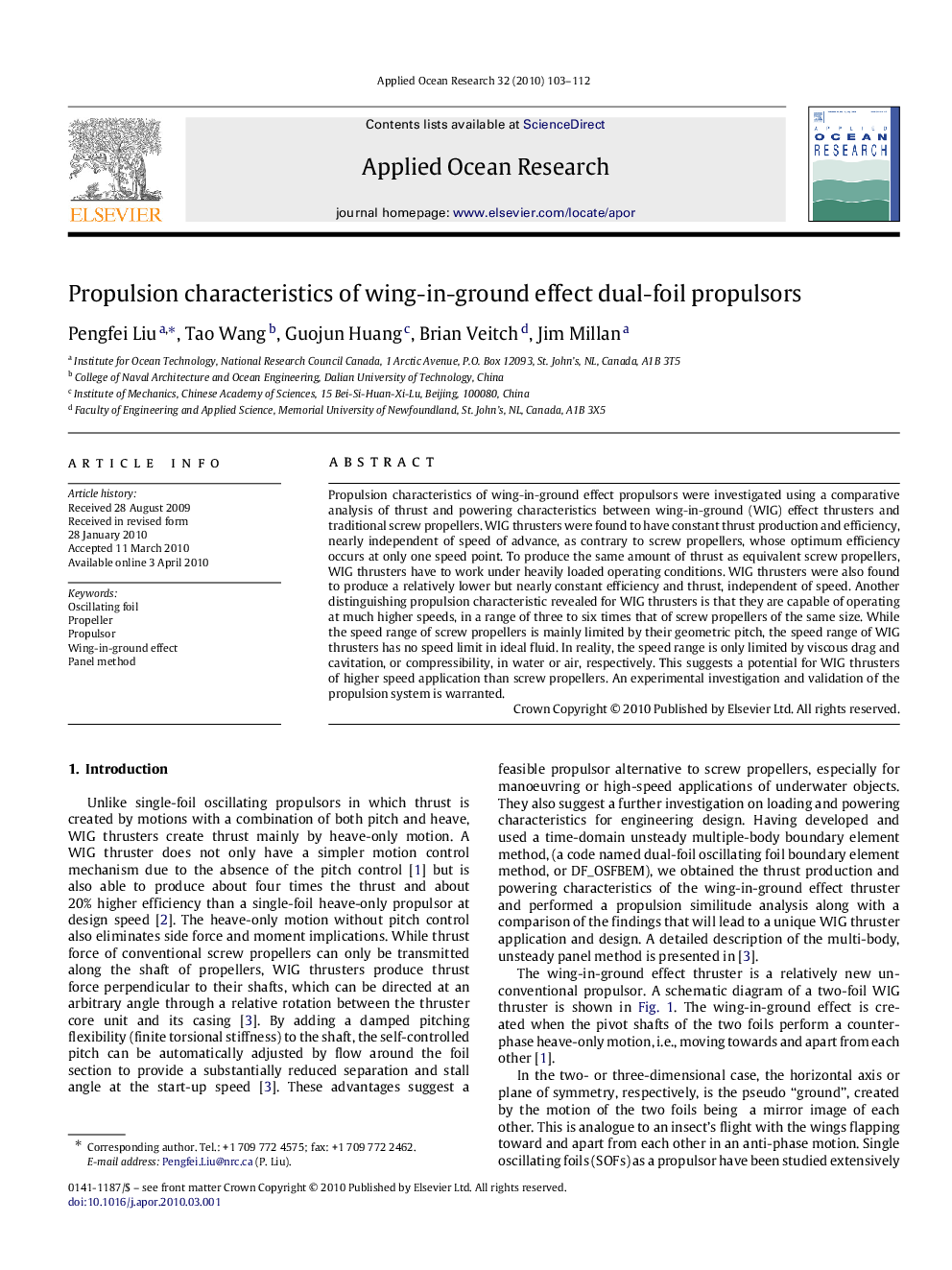| Article ID | Journal | Published Year | Pages | File Type |
|---|---|---|---|---|
| 1720324 | Applied Ocean Research | 2010 | 10 Pages |
Propulsion characteristics of wing-in-ground effect propulsors were investigated using a comparative analysis of thrust and powering characteristics between wing-in-ground (WIG) effect thrusters and traditional screw propellers. WIG thrusters were found to have constant thrust production and efficiency, nearly independent of speed of advance, as contrary to screw propellers, whose optimum efficiency occurs at only one speed point. To produce the same amount of thrust as equivalent screw propellers, WIG thrusters have to work under heavily loaded operating conditions. WIG thrusters were also found to produce a relatively lower but nearly constant efficiency and thrust, independent of speed. Another distinguishing propulsion characteristic revealed for WIG thrusters is that they are capable of operating at much higher speeds, in a range of three to six times that of screw propellers of the same size. While the speed range of screw propellers is mainly limited by their geometric pitch, the speed range of WIG thrusters has no speed limit in ideal fluid. In reality, the speed range is only limited by viscous drag and cavitation, or compressibility, in water or air, respectively. This suggests a potential for WIG thrusters of higher speed application than screw propellers. An experimental investigation and validation of the propulsion system is warranted.
